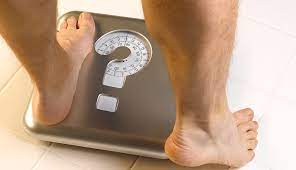Table of Contents
Introduction: Fitness Motivation Tips
Exercising has numerous health advantages. This article aims to cover the topic of fitness motivation tips to help you get up and go! Exercising can improve sleep quality, promote weight loss, build muscle mass, lower blood pressure and cholesterol levels, as well as enhance mental and physical well-being.

But finding and keeping motivation to exercise can be a real challenge. Fortunately, there are ways to make exercising more enjoyable and rewarding!
1. Set Realistic Goals
When making the decision to lose weight, you may have many goals in mind. But to guarantee success, your objectives must be achievable and within reason.
People often make the mistake of setting lofty goals that may not be achievable. For instance, if your aim is to lose 30 pounds in six weeks, that may not be a wise plan since this could cause you to shed pounds temporarily but then gain them back again.
Set a more achievable goal, such as losing 10 percent of your body weight. Doing this can improve your health and lower the risk of chronic illnesses like heart disease or type 2 diabetes.
Achieving a goal that is within your grasp can provide you with a feeling of accomplishment, and it may motivate you to stay on track and work toward long-term objectives.
Use the goal-setting strategy S.M.A.R.T (specific, measurable, achievable, realistic and time-based) to set achievable weight loss objectives. This could include setting a specific start date as well as an objective weight to aim for.
Achieving a SMART goal will give you a sense of accomplishment and the drive to continue on your journey. Plus, measuring progress and assessing results along the way will allow for ongoing evaluation and improvement.
Create micro-goals that are realistic and achievable, such as walking 30 minutes daily or eating five servings of vegetables daily. These process goals will help you form new habits that could ultimately lead to permanent weight loss; plus, these small wins along the way will keep your motivation high.
2. Make Exercise a Part of Your Daily Routine
Many people struggle to fit exercise into their daily schedule, but it doesn’t have to be. According to the Physical Activity Guidelines for Americans, even 30 minutes of moderate activity a day can contribute to weight loss and a healthier lifestyle.
One way to ensure you stick with your exercise program is selecting activities you enjoy. Select workouts that are challenging but manageable, and move at a pace comfortable for you. If this is your first time trying out fitness, start small and gradually increase the amount of daily exercises recommended over time.
Once you’ve formed a regular exercise habit, it can be beneficial to plan ahead for future sessions. You can do this by writing down your plans, marking them on your calendar or enrolling in an online fitness program.
Another way to make it easier to stay motivated with your workouts is to divide them up into manageable chunks – five or ten minutes long. This will make the task seem less like a chore and more like something you look forward to doing.
Finally, remember to take a rest day or two each week in order to allow your body time to recover from working out. Doing this prevents you from becoming resentful of the exercise routine and ensures you stay motivated even if you’re feeling fatigued or sore.
Finding a workout you enjoy and that offers immediate rewards is essential. These could be anything from taking a hot bath to enjoying a cup of coffee – so there’s no need to wait until after your session before enjoying your treat.
3. Listen to Music
Music can be an inspiring tool, helping to increase motivation, endurance, mental health and reduce fatigue. But selecting the right kind of music is essential for getting maximum benefits – consider its tempo, rhythm, genre and lyrics when selecting music for optimal results.
For instance, if you want to boost your endurance during a workout, listen to music with a fast tempo. Doing so will make the body work harder, burn more calories and improve moods simultaneously.
Another advantage of music is that it helps you focus on your workout. A study revealed that people who listened to music were more successful at exercising than those without.
Before beginning to exercise, try listening to music. This can help you focus on your workout and make it more likely that you’ll finish successfully.
You can even create a playlist to help you decide what songs to listen to during your workout. Alternatively, you could try listening to podcasts or audiobooks.
One of the great benefits of music is that it can be used for different occasions and moods. You can listen to upbeat tunes before going to sleep or soothing classical music after a long day at work.
Before bed, listening to soothing music can help you sleep better and ease stress and anxiety. Furthermore, it has been known to boost immunity by decreasing cortisol levels in the body, making you less susceptible to illness.
4. Involve Others
Beyond the obvious (work, friends, family), it’s essential to get involved with others to hold yourself accountable. A group exercise class in a park or some outdoor activity where you can work out on nice days could be ideal. You could even sign up for a local 5k race as an incentive!
Maintaining a clear mission statement and vision of your goals is essential. To reach those objectives, be honest with yourself and ensure you can communicate your desires to others in an approachable way that they will respect. Keeping a journal of progress will help keep you on track for success.
5. Visualize Your Goals
Visualization can be an incredibly motivating way to stay motivated in the gym. It allows you to visualize what you want and break down your goals into manageable steps that you can actually reach.
When trying to shed pounds, visualization can be a powerful tool. Visualizing yourself at your ideal weight will boost your self-esteem and encourage you to stay committed to following through with your diet and exercise plans.
As you make progress towards your goal, visualization can help you overcome any challenges that may arise. For instance, if you struggle with sticking to a strict diet or have cravings for sugary snacks, visualize yourself eating nutritious foods and feeling satisfied after each meal.
Visualization can be an effective tool for weight loss, but it’s essential to remember that results take time. Therefore, be consistent with your visualization sessions and do them every day.
Another crucial element when practicing visualization is being aware of your emotions during the exercise. Many people struggle with connecting their feelings during visualization, so if this applies to you, be sure to pay attention to how you are feeling during each session.
By being present during visualizations, it may become easier to reach your objectives more quickly. Furthermore, staying motivated after the visualization has ended can help keep you motivated to keep going even after it has ended.
If you are uncertain how to utilize visualization for health goals, consulting a professional coach or counsellor is wise. They can offer guidance and tips on visualization as well as other tools that will help improve your lifestyle and help reach those targets.
Frequently Asked Questions
- Question 1: How do I motivate myself for weight loss?
- Answer 1: Motivating yourself for weight loss can be achieved by setting realistic goals, finding an exercise routine you enjoy, tracking your progress, seeking support from friends or a fitness community, and rewarding yourself for reaching milestones.
- Question 2: How can a lazy and unmotivated person lose weight?
- Answer 2: Even for individuals who may feel lazy or unmotivated, small changes in daily habits can make a difference. Start with simple activities like short walks, gradually increasing physical activity, and incorporating healthier food choices. Setting achievable goals and celebrating progress can help maintain motivation.
- Question 3: What is the biggest motivation to lose weight?
- Answer 3: The biggest motivation to lose weight varies from person to person. Some common motivations include improving overall health, increasing self-confidence, fitting into desired clothing, and reducing the risk of obesity-related health issues.
- Question 4: Why do I struggle with motivation to lose weight?
- Answer 4: Struggling with motivation to lose weight can be influenced by various factors, such as unrealistic expectations, lack of visible progress, emotional eating, or a negative mindset. Identifying the root causes of the struggle and seeking support can be helpful in overcoming it.
- Question 5: How not to get discouraged when losing weight?
- Answer 5: To avoid getting discouraged during weight loss, focus on the progress you’ve made rather than setbacks. Celebrate small achievements, maintain a positive outlook, seek support from friends or a support group, and remind yourself of your ultimate goals and reasons for embarking on the weight loss journey.
- Question 6: What is your biggest struggle with losing weight?
- Answer 6: The biggest struggle with losing weight varies among individuals. Some common struggles include staying consistent with exercise, managing food cravings, dealing with emotional eating, and overcoming plateaus in weight loss progress.
- Question 7: What is the hardest part of losing weight?
- Answer 7: The hardest part of losing weight can differ for each person. Some find it challenging to stay committed to their weight loss plan, while others struggle with breaking old eating habits. Additionally, facing temptation and staying disciplined can be difficult aspects of the weight loss journey.
- Question 8: Is it mentally hard to lose weight?
- Answer 8: Yes, losing weight can be mentally challenging. It requires consistent effort, patience, and overcoming self-doubt. Maintaining a positive mindset, seeking support, and staying focused on the benefits of weight loss can help navigate the mental hurdles.
- Question 9: What age is it hardest to lose weight?
- Answer 9: It can be more challenging to lose weight as you age due to a slowing metabolism and changes in hormonal levels. However, weight loss is achievable at any age through a combination of healthy eating, regular exercise, and lifestyle adjustments.
- Question 10: Where is weight loss most noticeable first?
- Answer 10: Weight loss results can vary, but for some people, it’s common to notice initial changes in the face, waistline, and limbs. The areas where weight loss is most noticeable first can depend on individual body composition and genetics.
- Question 11: When you lose weight where is it most noticeable?
- Answer 11: When losing weight, changes in body composition can be noticeable in various areas, such as the face, abdomen, arms, and thighs. However, the pattern of weight loss can differ among individuals.
Sources of Information:



